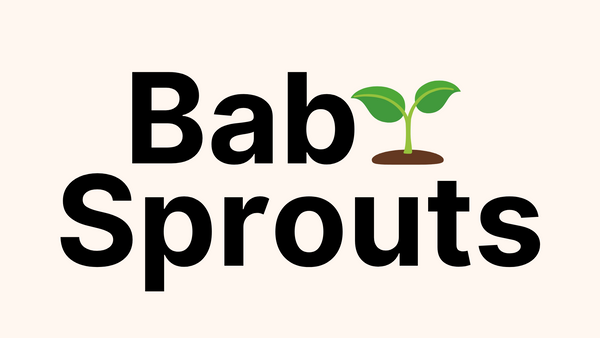
The Ultimate Guide to Choosing the Best Baby Pillow for Comfort and Safety
Understanding Baby Pillow Safety Standards
Why Safety is Essential in Baby Pillows
Safety is crucial when it comes to baby pillows. A safe pillow can prevent suffocation risks. It also ensures proper head and neck support for infants. Parents must be aware of potential hazards.

Babies have delicate necks and developing spines. The right pillow can aid in proper alignment. It can also reduce the risk of flat head syndrome. Safe pillows are made with breathable materials. This helps prevent overheating.
Choosing a safe pillow gives parents peace of mind. It allows babies to sleep comfortably without risks. Remember, safety should always come first in baby products.
The Role of Regulations in Baby Pillow Manufacturing
Regulations play a vital role in baby pillow manufacturing. They ensure products meet safety standards. In the US, the Consumer Product Safety Commission (CPSC) sets guidelines.
These rules cover materials, size, and design. Manufacturers must comply with strict safety tests. This includes checking for small parts that could pose choking hazards.
Regulations also cover labeling and warning information. This helps parents make informed choices. Companies must prove their products are safe before selling. Regular inspections ensure ongoing compliance with safety standards.
What Parents Should Know About Pillow Safety
Parents should be aware of key pillow safety facts. First, pillows are not recommended for babies under 18 months. This is due to suffocation risks. Always check the age recommendations on baby pillows.
Look for pillows made with breathable, hypoallergenic materials. Avoid pillows that are too soft or fluffy. These can pose suffocation hazards. Ensure the pillow fits snugly in the crib or bed.
Regularly check pillows for wear and tear. Replace them if they become lumpy or misshapen. Always follow the manufacturer's care instructions. This helps maintain the pillow's safety features.
Factors to Consider When Selecting a Baby Pillow
Material and Comfort: What to Look For
When choosing a baby pillow, material and comfort are key factors. Look for pillows made from natural, breathable fabrics. Cotton and bamboo are excellent choices. They help regulate temperature and prevent overheating.

The filling should be firm yet comfortable. Memory foam or latex can provide good support. However, ensure they are certified safe for babies. Avoid pillows with small beads or loose filling.
Consider pillows with removable, washable covers. This makes cleaning easier. The cover should be soft and gentle on your baby's skin. Avoid materials that could cause allergies or skin irritation.
Age Appropriateness: Pillows for Different Stages of Development
Baby pillows should be chosen based on your child's age and development stage. For newborns and infants under 18 months, flat sleeping surfaces are safest. Pillows are not recommended at this stage.
For toddlers (18 months to 3 years), look for thin, firm pillows. These provide gentle support without risk. As children grow, they can transition to slightly thicker pillows.
Preschoolers (3-5 years) can use pillows similar to adult ones. However, ensure they're not too high or soft. Always follow age guidelines provided by manufacturers. This ensures the pillow is suitable for your child's developmental stage.
Additional Features that Enhance Safety and Comfort
Some baby pillows come with extra features for added safety and comfort. Look for pillows with anti-slip backing. This prevents the pillow from moving during sleep.
Pillows with temperature-regulating properties can enhance comfort. These help keep your baby cool in summer and warm in winter. Some pillows have ergonomic designs to support proper head and neck alignment.
Consider pillows with 'breathable' zones. These allow for better air circulation. This reduces the risk of overheating. Pillows with removable inserts let you adjust the thickness as your child grows.
Recommendations and Best Practices for Baby Pillow Use
Expert Advice on Safe Baby Pillow Products
Experts recommend choosing pillows certified by safety organizations. Look for products approved by the Juvenile Products Manufacturers Association (JPMA). These meet strict safety standards.

Pediatricians advise against using pillows for babies under 18 months. After this age, start with a thin, firm pillow. Avoid overly soft or fluffy pillows that could pose suffocation risks.
Experts suggest opting for pillows with hypoallergenic properties. This reduces the risk of allergic reactions. Always follow the manufacturer's age and usage guidelines. These are based on safety research and testing.
How to Properly Use and Clean Your Baby Pillow
Proper use and cleaning of baby pillows is crucial for safety. Always place the pillow flat under your child's head. Avoid propping it up or using multiple pillows.
Clean the pillow regularly according to manufacturer instructions. Most covers can be machine washed. The pillow itself may need spot cleaning or gentle hand washing.
Air dry pillows thoroughly before use. This prevents mold growth. Replace pillows every 1-2 years or sooner if they become lumpy or misshapen. Regular cleaning and inspection help maintain pillow safety.
Safety Protocols and Tips for Parents
Follow these safety tips when using baby pillows:
- Always supervise your baby during sleep.
- Ensure the pillow fits snugly in the crib or bed.
- Remove any other soft items from the sleeping area.
- Check the pillow daily for wear and tear.
- Don't use adult pillows for babies or young toddlers.
- Keep the sleeping area well-ventilated.
- Follow safe sleep guidelines from pediatric organizations.
Remember, a firm, flat surface is safest for babies under 18 months. When introducing a pillow, start gradually. Always prioritize safety over comfort. If in doubt, consult your pediatrician for personalized advice.
